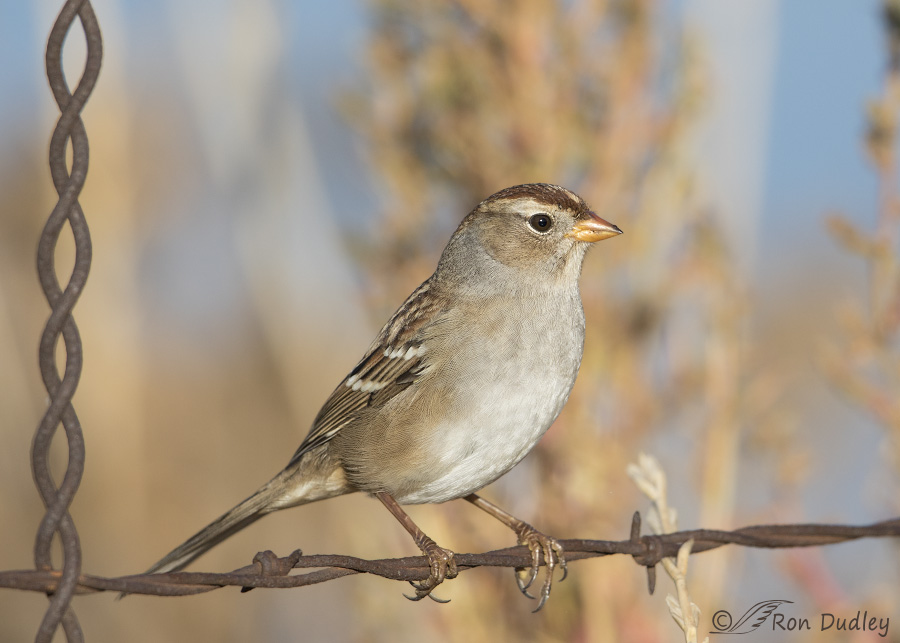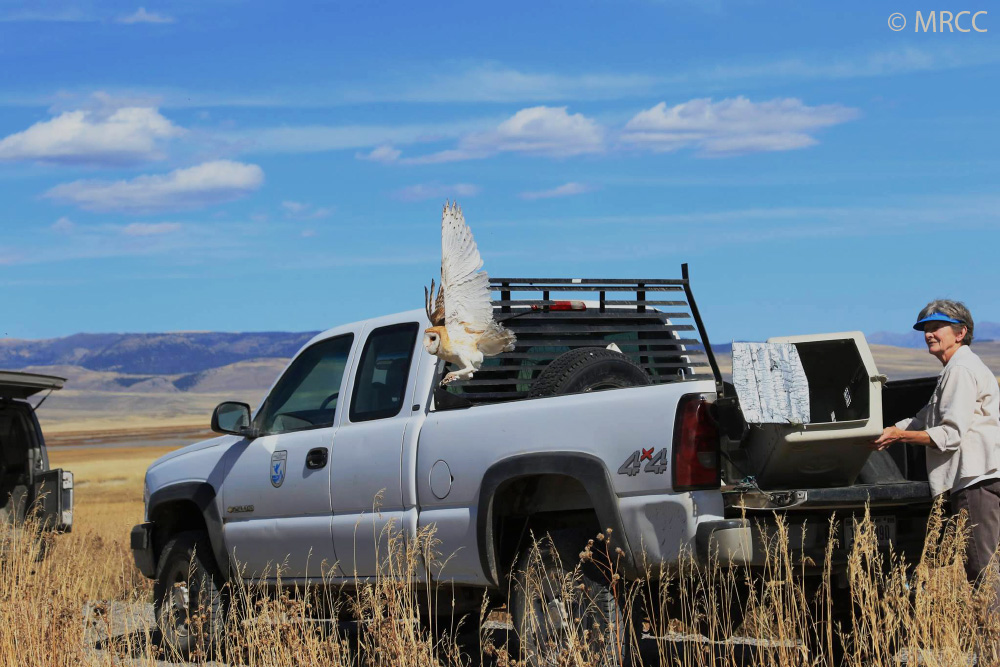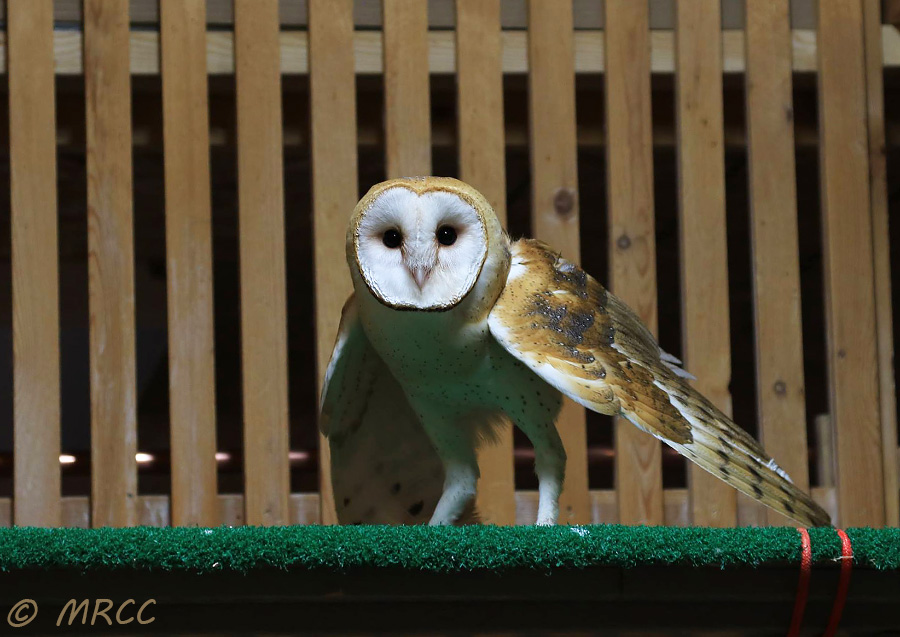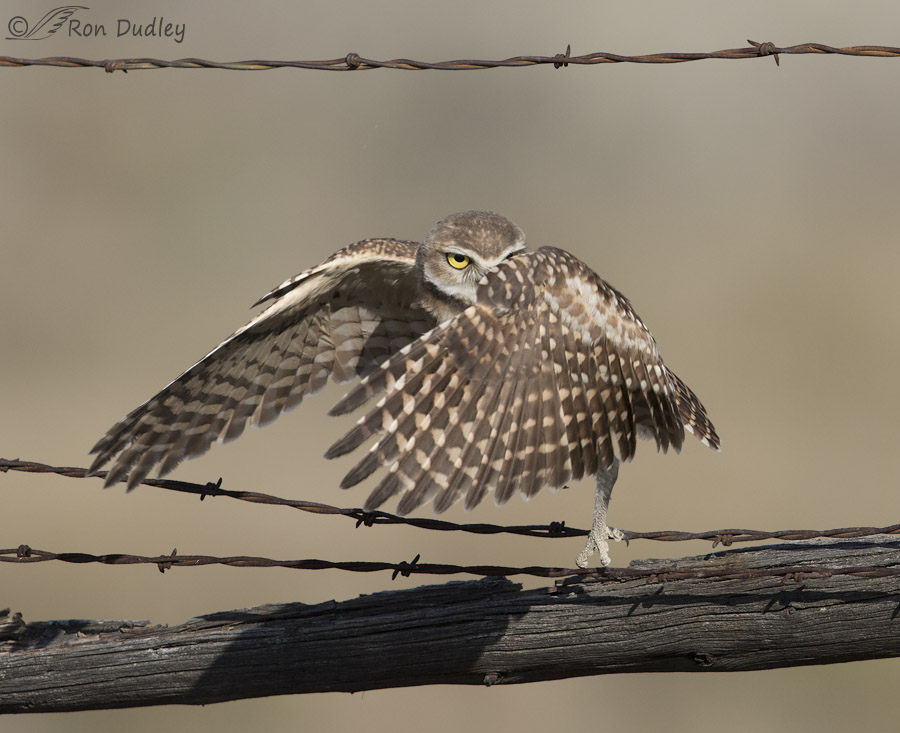Tag: barbed wire
Barbed Wire Barn Owl Released Back Into The Wild (with photos)
Status Report (with current photo) Of The Barn Owl That Was Entangled In Barbed Wire
Barn Owl Hung Up On Barbed Wire
Believe me, this was a traumatic event for all concerned. Yesterday morning while driving west on the South Road in the Centennial Valley of southwest Montana we found this beautiful Barn Owl hanging from barbed wire along the side of the road. In its struggles to escape the owl had wrapped its wing around the sharp double barb that had penetrated its flesh to the point that it was bleeding and I couldn’t get the owl off the wire easily. First I cut both barbs off but I still couldn’t disentangle the owl so I had to cut out a 2′ piece of the wire with the owl still attached to it. Then we laid the owl on my pickup tailgate (partially wrapped in a towel) and began the extraction process. At that point a near-miracle occurred. A car drove up on the deserted road and it happened to be Bill West, Manager of nearby Red Rock Lakes National Wildlife Refuge. Bill was on his way to a meeting in Dillon (roughly 80 miles away) and helped me to extract the owl from the wire. We wrapped it up in his jacket and Bill took it to the Humane Society in Dillon where arrangements were made to transport it to a rescue center in Bozeman. My next concern was the wire I had cut. “Cuttin’ fences” is serious business in cattle country – cows can get out and both people and cows can be killed in accidents when they do, not to mention the fact…
Burrowing Owl Take-off Series And The Dangers Of Barbed Wire
Juvenile Burrowing Owl Walking The High-wire
Eastern Kingbirds
It’s snowing hard as I write this and it’s been overcast and gloomy for days which has turned my thoughts to spring birds. Eastern Kingbirds are a prime example as they winter in the Amazon so seeing them around here is a sure sign of springtime. They’re a fascinating species. Kingbirds are notorious for their aggressive nature toward other birds and their scientific name Tyrannus tyrannus very appropriately means “tyrant, despot or king”. During the breeding season they’re a “sit and wait predator”, largely of flying insects though they eat mostly fruit while on their winter range. They have never been observed to drink water – apparently getting enough of it in their insect and fruit diet. They virtually never walk anywhere! Most locomotion is by flight and when on the ground they either hop to a new location or take short flights but they don’t walk. The only time walking has ever been observed is during nest site selection. 1/1000, f/9, ISO 500, 500 f/4, 1.4 tc The kingbird in the first four photos of this post was the most cooperative specimen of the species I’ve ever photographed. It let me get close while on a natural perch (as opposed to the fence wires they so often prefer) and it gave me a variety of interesting calling, preening and stretching poses for almost five minutes. 1/2000, f/9, ISO 500, 500 f/4, 1.4 tc As the bird moved to my left on the perch it (the perch) developed a different character due to the curving twig coming off the main branch. Here the kingbird is beginning an elaborate…






